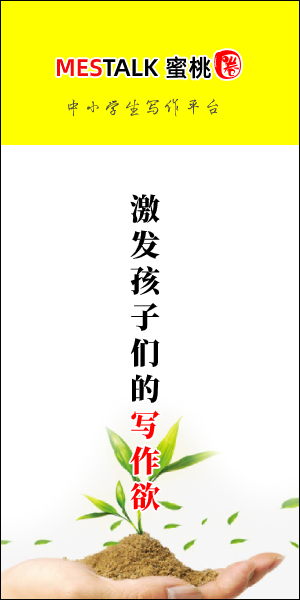Dingerkus & DeFino, 1983
阿拉伯斑竹鲨(Chiloscyllium arabicum),又称阿拉伯地毯鲨、阿拉伯肩章鲨、阿拉伯毛鲨,是天竺鲨科中的一种竹鲨,分布于波斯湾沿海到印度的珊瑚礁及其他浅海区。这种鲨鱼长78厘米(31英寸),特点是细长褐色身体和两个背鳍、尾鳍笔直,第二个比第一个小但长一些。 阿拉伯斑竹鲨以辐鳍鱼纲的鱼类及无脊椎动物为食。繁殖是为卵生,每年循环进行。雌性一次储四个卵囊,卵会在70-80天后孵化。这种小型鲨鱼经常被捕获为副捕品,但甚少使用。由于其分布范围内不断增加的捕鱼压力和栖息地退化,国际自然保护联盟(IUCN)将其评定为近危。目前已并已被人工饲养,有些水组馆有此鲨鱼。
Prior to being described as a new species in Gubanov and Schleib's 1980 , the Arabian carpetshark was misreported as the grey bamboo shark (); it is uncertain whether the ranges of these two similar sharks in fact overlap. No type specimens are known. Other common names for this species include Arabian bamboo shark and confusing bamboo shark.
The Arabian carpetshark inhabits coastal waters 3~100米(9.8~328.1英尺) deep, though most are found shallower than 10米(33英尺). Its range extends from the Persian Gulf to Pakistan and western India; it is abundant in the Persian Gulf in spring and summer, and seldom reported from Oman and India. This demersal species favors coral reefs, lagoons, rocky coastlines, and mangrove estuaries.
The Arabian carpetshark has a slender, nearly cylindrical body and a relatively long, thick, rounded snout. The nostrils are set a good distance from the snout tip and preceded by a pair of short barbels. The eyes are medium-sized and placed high on the head, each with a low ridge above and a large spiracle behind and below. The small mouth lies well forward of the eyes; there is a continuous fold of skin across the chin that wraps around the corners of the mouth. There are 26–35 upper tooth rows and 21–32 lower tooth rows. The teeth have a large central cusp and a pair of lateral cusplets. The five pairs of gill slits are short, with the fourth and fifth pairs very close together.
The pectoral fins are small, broad, and rounded; the pelvic fins are similar and almost as large. The two dorsal fins have straight trailing margins and are spaced well apart. The first dorsal fin is as large or larger than the pelvic fins, originating behind the middle of the pelvic fin bases. The second dorsal fin is slightly smaller than the first but has a longer base. There is a prominent midline ridge along the back, which continues between the dorsal fins. The long, keel-like anal fin originates behind the second dorsal fin. The caudal fin is low and lacks a lower lobe; the upper lobe has a strong ventral notch near the tip. Adults are a plain tan color above and white below, sometimes with an orange tint on the fin margins; juveniles have faint lighter spots on the fins. This species reaches a maximum known length of 78 cm(31英寸).
Commonly found sheltering inside caves and crevices, the Arabian carpetshark is a predator of bony fishes (including snake eels) and invertebrates (including stomatopods, shrimp, crabs, squid, gastropods, and echiuroid worms). This hardy species can survive for some time out of water. It is oviparous like other members of its family, with a six-month breeding season. The reproductive cycle has been documented in captivity: copulation involves the male holding onto one of the female's pectoral fins with his mouth, while inserting a single clasper into her cloaca for 5–15 minutes. When competing for mates, male sharks have been known to bite the claspers of rival males. Females produce an average of 33 egg capsules per year in batches of four, that are laid over a period of 20 minutes to two days. Of those eggs, about 7% are infertile. The egg cases have adhesive tendrils for securing them to coral, and hatch in 70–80 days at a temperature of 24 °C(75 °F). Newly emerged young measure under 10 cm(3.9英寸) long; sexual maturity is attained at a length of 45~54 cm(18~21英寸).
Small and harmless to humans, the Arabian carpetshark is one of the few shark species suitable for private aquaria. It is collected for the aquarium trade, which is not believed to pose a substantial threat to its population. The meat and possibly the fins of this shark can be used, but because of its size most individuals landed are discarded. It is captured incidentally in intertidal (artisanal stake-net traps), as well as in demersal trammel and trawl nets. The Arabian carpetshark forms the predominant component of the "cat shark" catch of Kuwaiti prawn trawls, which represents the second-largest bycatch (14% of total) of the fishery. It is also caught off Bahrain and likely elsewhere. Another potentially major threat to this species is habitat degradation: coral reefs in the Persian Gulf face bottom trawling, coastal development (especially large-scale land reclamation projects such as in the United Arab Emirates), Turkish dams on the Tigris-Euphrates river system, draining of marshes in Iraq, and oil spills. Coastal habitats off India are also similarly pressured. As both fishing and habitat degradation are likely to intensify in the region, the International Union for Conservation of Nature (IUCN) has assessed the Arabian carpetshark as Near Threatened.
